Yemen Portal

.svg.png.webp)
Yemen (/ˈjɛmən/ ⓘ; Arabic: ٱلْيَمَنْ, romanized: al-Yaman), officially the Republic of Yemen, is a country in West Asia. It is located in the southern end of the Arabian Peninsula, bordering Saudi Arabia to the north and Oman to the northeast. It shares maritime borders with Eritrea, Djibouti and Somalia. Covering 530,000 square kilometres (204,634 square miles) and having a coastline of approximately 2,000 kilometres (1,200 miles), Yemen is the second-largest Arab sovereign state on the Arabian Peninsula. Sanaa is its constitutionally stated capital and largest city. The country's population is estimated to be 34.7 million as of 2023. Yemen is a member of the Arab League, the United Nations, the Non-Aligned Movement and the Organisation of Islamic Cooperation.
In ancient times, Yemen was the home of the Sabaeans, a trading state that included parts of modern-day Ethiopia and Eritrea. Later in 275 AD, the Himyarite Kingdom was influenced by Judaism. Christianity arrived in the fourth century, and Islam spread rapidly in the seventh century, with Yemenite troops playing a crucial role in early Islamic conquests. Various dynasties emerged between the 9th and 16th centuries. During the 19th century, the country was divided between the Ottoman and British empires. After World War I, the Mutawakkilite Kingdom of Yemen was established, which became the Yemen Arab Republic (North Yemen) in 1962 following a coup. South Yemen became independent in 1967. In 1990, the two Yemeni states united to form the modern Republic of Yemen (al-Jumhūrīyah al-Yamanīyah). Ali Abdullah Saleh was the first president of the new republic until his resignation in 2012 in the wake of the Arab Spring.
Since 2011, Yemen has been facing a political crisis, marked by street protests against poverty, unemployment, corruption, and President Saleh's plan to amend Yemen's constitution and eliminate the presidential term limit. Subsequently, the country has been engulfed in a civil war with multiple entities vying for governance, including the government of President Hadi (later the Presidential Leadership Council), the Houthi movement's Supreme Political Council, and the separatist Southern Movement's Southern Transitional Council. This ongoing conflict has led to a severe humanitarian crisis and received widespread criticism for its devastating impact on Yemen's people. (Full article...)
Selected article -
The Yemeni Revolution (or Yemeni Intifada) followed the initial stages of the Tunisian Revolution and occurred simultaneously with the 2011 Egyptian revolution and other Arab Spring protests in the Middle East and North Africa. In its early phase, protests in Yemen were initially against unemployment, economic conditions and corruption, as well as against the government's proposals to modify Yemen's constitution. The protesters' demands then escalated to calls for the resignation of Yemeni President Ali Abdullah Saleh. Mass defections from the military, as well as from Saleh's government, effectively rendered much of the country outside of the government's control, and protesters vowed to defy its authority.
A major demonstration of over 16,000 protesters took place in Sanaʽa, Yemen's capital, on 27 January. On 2 February, Saleh announced he would not run for reelection in 2013 and that he would not pass power to his son. On 3 February, 20,000 people protested against the government in Sanaʽa, while others protested in Aden, a southern Yemeni seaport city, in a "Day of Rage" called for by Tawakel Karman, while soldiers, armed members of the General People's Congress and many protesters held a pro-government rally in Sanaʽa. In a "Friday of Anger" on 18 February, tens of thousands of Yemenis took part in anti-government demonstrations in Taiz, Sanaʽa and Aden. On a "Friday of No Return" on 11 March, protesters called for Saleh's ousting in Sanaʽa where three people were killed. More protests were held in other cities, including Mukalla, where one person was killed. On 18 March, protesters in Sanaʽa were fired upon, resulting in 52 deaths and ultimately culminating in mass defections and resignations. (Full article...)List of selected articles |
|---|
Selected biography -
Yahya Muhammad Hamid ed-Din (or Imam Yahya) (Arabic: يحيى محمد حميد الدين, 18 June 1869 – 17 February 1948) became Imam of the Zaydis in 1904 after the death of his father, Muhammad Al-Mansur, and Imam of Yemen in 1918. His name and title in full was "His majesty Amir al-Mumenin al-Mutawakkil 'Ala Allah Rab ul-Alamin Imam Yahya bin al-Mansur Bi'llah Muhammad Hamidaddin, Imam and Commander of the Faithful" (the prince of the believers, he who relies on God, the Lord of the Universe).
Yahya Muhammad Hamid ed-Din was born on Friday 18 June 1869 in Sanaa into the Hamidaddin branch of the al-Qasimi dynasty who ruled most of Yemen proper and the southern region of present-day Saudi Arabia for over 900 years. When Yahya became Imam, he effectively ruled over the mountainous areas of what will be North Yemen. However, the Ottomans who made claims in the area did not recognize the rule of the Imams of Yemen since their entry into the region. He spent the early years of his reign attempting to expel the Ottoman presence, who withdrew after their defeat in World War I. (Full article...)List of selected biographies |
|---|
General images -
Selected city -
Selected picture -
Selected cuisines, dishes and foods -
List of articles |
|---|
Related portals
Religions in Yemen
Arab states
Categories
Topics
Related portals
Religions in Yemen
Arab states
Associated Wikimedia
The following Wikimedia Foundation sister projects provide more on this subject:
-
 Commons
Commons
Free media repository -
 Wikibooks
Wikibooks
Free textbooks and manuals -
 Wikidata
Wikidata
Free knowledge base -
 Wikinews
Wikinews
Free-content news -
 Wikiquote
Wikiquote
Collection of quotations -
 Wikisource
Wikisource
Free-content library -
 Wikiversity
Wikiversity
Free learning tools -
 Wiktionary
Wiktionary
Dictionary and thesaurus
More portals
-
 List of all portals
List of all portals -

-

-

-

-

-

-

-

-

-
 Random portal
Random portal -
 WikiProject Portals
WikiProject Portals


.jpg.webp)








.jpg.webp)










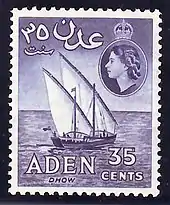
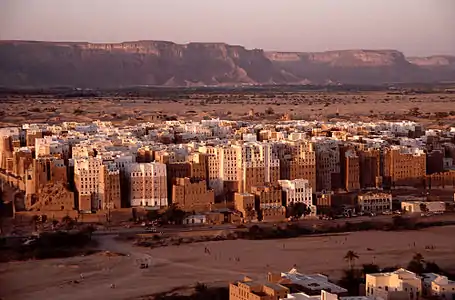

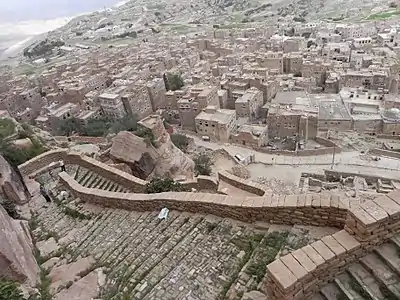





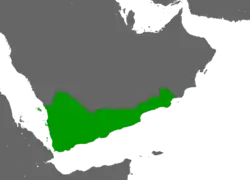
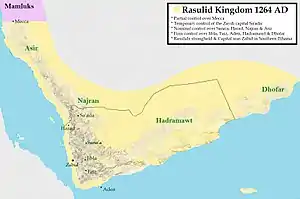

.svg.png.webp)








%252C_1902.jpg.webp)


.jpg.webp)



